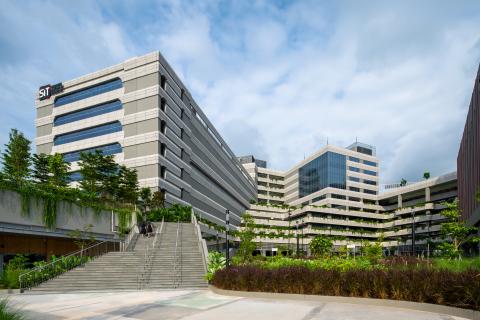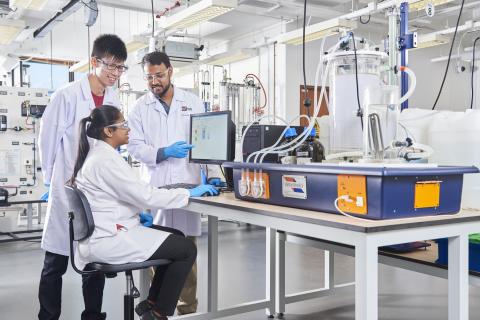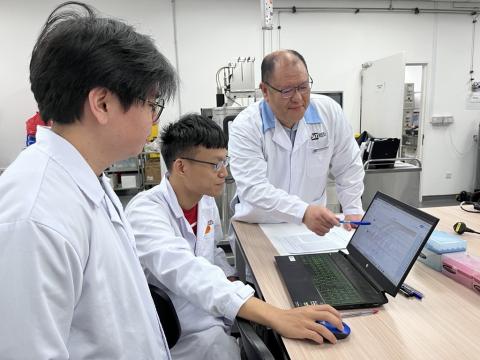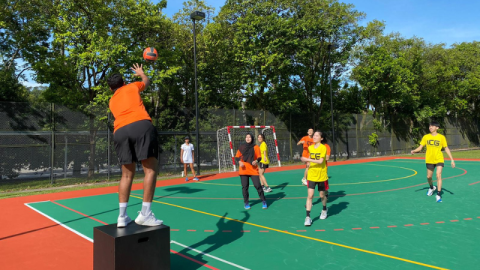As more of those entering the workforce are diversifying the way they pick up knowledge and competency-based learning picks up pace, how does this impact employers and how they hire?
You would be hard-pressed to find a global employability ranking that doesn’t feature Singapore prominently. The World Economic Forum (WEF)’s latest edition of the Global Competitiveness Index lauded the city-state for coming in first among the 141 economies studied. The report cited: "Singapore improves from an already high base on 10 of the 12 pillars, and its score on every pillar is between 4 and 19 points higher than the OECD average."
According to Singapore's Ministry of Manpower, 62% of residents in the labour force in 2022 were tertiary graduates with a degree, diploma, or professional qualification; a significant increase from 48% a decade ago.
The growth was more pronounced for those with degrees, rising from 29% in 2012 to 42% in 2022. Degree holders aged 25 to 64 saw their employment rate growing to a two-decade high of 88.4% in 2022.
While the number of degree holders rises, gone are the days when a degree or diploma was the only key to a promising career. Increasingly, the criteria for a candidate’s employability has expanded in scope. Paired with rapid technological transformation, the importance of skills-based jobs comes into the spotlight.
In his presentation back in July 2023, Lewis Garrad, Partner and Career Business Leader at Mercer, highlighted the importance of enhancing employability for a skills-based job market through competency-based learning. He explained the continual need for reskilling: "As technology bleeds into the workforce, it becomes more important not just to understand the technology, but to understand the thinking of how to utilise it and facilitate further engagement through it."
Garrad also noted that Institutes of Higher Learning (IHLs) are adapting their offerings in response to the market’s rising demand for skills. There is a growing focus on lifelong learning to keep up with evolving demands of industry needs. Singapore, in particular, is diversifying its educational pathways to promote interdisciplinary offerings that support future career flexibility, including industry partnerships. This trend underscores a growing emphasis on competency-based education (CBE) – an educational approach that focuses on job-specific skills and the practical application of knowledge. CBE ensures learners acquire the knowledge and abilities they need to perform effectively in real-world scenarios.

IHLs need to adapt to the changing needs of the workforce by focusing on skills-based learning and competency-based education.(Photo: SIT)
Garrad’s presentation took place on day two of the Applied Learning Conference (Friday, 21 July 2023), attended by Human Resources Online. It saw leaders discussing CBE in the context of Singapore and its influence on the future of learning, insights into the nation’s evolving job landscape, equipping in-employment learners with essential competencies, and more. As the workforce increasingly diversifies the way they learn and acquire competencies, how does this impact employers and their hiring?
How to Navigate Hiring in an Evolving World of Credentials
From an industry perspective, there are several overarching competencies to look out for when hiring, regardless of the job.
At a separate session, Tan Bee Ling, Vice President (Group Learning), PSA International (pictured below, second from left), shared what she personally looks for in potential hires: “The ability to learn, unlearn, and relearn.” In other words, she looks for talent with learning agility, which typically refers to an individual's ability and willingness to learn and adapt to new or complex situations quickly. This would include being able to look beyond their own work and propose more holistic solutions, accept new challenges, and acknowledge that there are gaps in their knowledge.
Admittedly, she says, this may take some effort to assess during the interview process. She advises leaders to lead with competency-based questions — for example, ask for specific instances of any setbacks the candidates have faced and how they recovered. This will help to evaluate the candidate’s inclination towards learning through real-life situations.
The real litmus test is how they work when they come in and if organisations can provide an ecosystem that caters to varying levels of learning agility among the workforce. Fellow panellist Charlton Ong, Vice President, People & Culture, Group Enterprise & Singapore, Singtel (pictured below, third from left), suggested emotional intelligence (EQ) to be the most important.

The panel, moderated by SIT’s Professor Steven Wong (far left), discussed how organisations can provide an ecosystem to cater to varying levels of learning agility among the workforce. (Photo: SIT)
Such a skill is significant, regardless of the size or complexity of the organisation. This is where the ability to navigate with emotional intelligence comes in, from the person’s prowess to interact with others, build relationships, and be a competitor while not coming across as a threat.
He acknowledges that building EQ is easier said than done. “While it may come naturally for some, others would need to truly hone it over time.”
With the increase in technical domain expertise and the greater need for skills, this raises the question—how do we balance nurturing subject matter experts and broader horizontal competencies while grooming our employees for future roles?
Sahasranaman Sankaran, Director, Capability Development, Government Technology Agency (GovTech) (pictured above, far right), the third panellist in the session, chimed in:
"In the past five to seven years, this paradox is no longer [about] ‘this or that’. It has now become [about] ‘this and that’."
“That integration drives the common solution.”
Elaborating on what this would entail in GovTech’s context, he shared a discussion he had previously heard. It raised the question: is it more important to have a tech officer in policy or a policy officer in tech? As Sahasranaman concluded, it is now increasingly essential to have a tech officer in policy instead of a generalist in tech trying to determine the outcome.
From Classrooms to Careers: What More Can Be Done?
From learning institutes’ perspective, admittedly, there may be some gaps in competencies between the period in which individuals graduate and the period in which they enter the workforce.
Thus, Ong reaffirms his belief that there is a need for improvement in soft skills. Several graduates may be well-versed in the area they are trained in, but they may still need assistance navigating working in a competitive environment.
Another pertinent area to tackle would be the declining shelf-life of skills, especially in the face of rapid technological transformation – thus driving home the urgent need to update skillsets consistently.
Tan echoes this sentiment, pointing out the speed at which curricula change and the need to keep up with the times.
Interestingly, Sahasranaman takes an alternate perspective: “I’d be worried if institutions could equip students with all the competencies. This means organisations are not evolving, and there is a limit to their potential.
"Fundamentally, that delta (incremental change) needs to be there. This pushes people towards the next boundary."
Sahasranaman asks learning institutions to not be perfect. However, he acknowledges that learning agility is a never-ending process — not necessarily formal. He explains that this would mean going beyond simply coming to an IHL, sitting down, and learning in a classroom.
Conclusion
These insights reinforce that in a skills-driven market, Singapore’s stakeholders are increasingly embracing CBE as the driving force behind a new wave of credentials.
The once-traditional metrics of academic qualifications are now being replaced by a dynamic emphasis on skills, competencies, and real-world application. This means employers need to diversify their hiring strategies to truly get the best mix of capable talent, and ramp up efforts to ensure their learning strategies are accessible and relevant to a range of learners with varying needs and learning styles. The two-day ALC also saw the launch of the SIT Teaching and Learning Academy (STLA), which aims to be a leader for CBE to boost education progress for in-employment learners looking to upskill or reskill themselves.
This article was first published in Human Resources Online.















![[FA] SIT One SITizen Alumni Initiative_Web banner_1244px x 688px.jpg](/sites/default/files/2024-12/%5BFA%5D%20%20SIT%20One%20SITizen%20Alumni%20Initiative_Web%20banner_1244px%20x%20688px.jpg)


